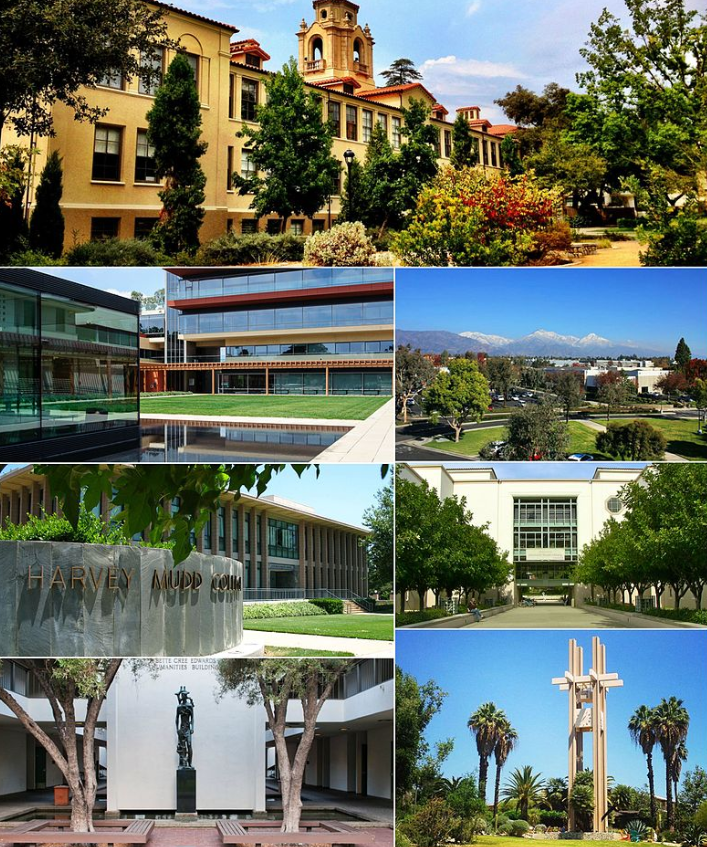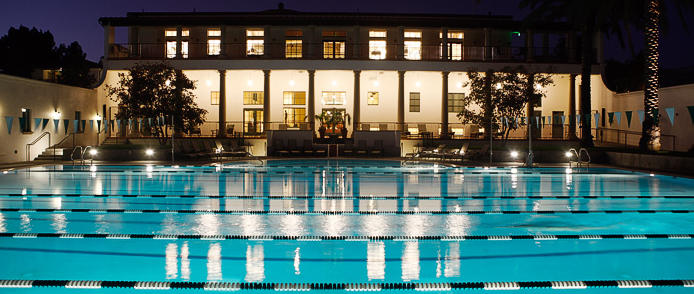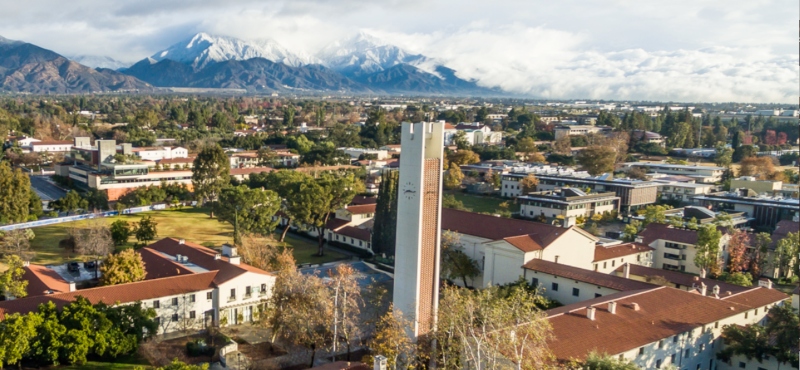What Exactly Is a College Consortium?
Our national motto, “Out of Many, One” describes a nation of separate States, signifying that the One is more than the sum of its parts. I often times use an expression with my students, 1 + 1 = 3, when I am describing a powerful pairing for something they might be considering. Similarly, college administrators have recognized that a union with other colleges makes each of them better and the sum of the whole even greater. Such collaboration among colleges is called a consortium.
I thought we could take this chance to help familiarize you with the college consortium concept and the pros of considering a consortia college member to your college list.

Views around campus at the Claremont Colleges Consortium
Why Do Schools Choose College Consortium?
Higher education is a marketplace in which colleges compete for the best students. But you know that already! What you may not realize is that remaining competitive in this market requires significant financial resources.
Without depleting their endowment, there are two common ways for a college to grow its operating funds: #1 by increasing income (tuition and fees), or #2 by lowering expenses (salaries, facilities, overhead, etc.). There’s a limit to the amount of tuition and fees that the market will bear, and most top-tier colleges are at or near that limit. Cutting expenses might render a school less competitive … (no climbing wall, oh no!) which is exactly what they’re trying to avoid!
But colleges have another option: Lower costs by sharing resources with other colleges in a consortium. A consortium pools redundant resources such as cultural centers, libraries, bookstores, and laboratory facilities. This produces dual benefits; each college becomes more attractive to prospective students, and more funds become available to each school to improve academic quality — its fundamental purpose.
Why Do Students Choose College Consortium?
The incentive of colleges to form consortia meshes well with the needs of a large segment of students — those who can’t clearly discern, at the age of 16 or 17, the educational path that’s best for them. Most students at this age are not quite ready to determine a major or a specific degree path just yet.
A student unsure of their educational goals can retain a high degree of academic flexibility by matriculating at a college that’s part of a consortium. In a consortium, a student has the opportunity to choose from a wider variety of courses and programs through the curricula of all of the member colleges. This improves the chances that the student will find the academic specialty just right for them and offers a broader selection of options to try.
College consortia vary widely in size, scope, and policies. There are over 70 of them in the United States. Some of the best known are:
The Five Colleges (Massachusetts) Consortium
Claremont Colleges Consortium
The Consortium of Universities of the Washington Metro Area
Quaker/Tri-College Consortium
The Five Colleges (Ohio) Consortium
Atlanta University Center Consortium
Baltimore Collegetown
Babson/Brandeis/Olin/Wellesley Consortium
Barnard/Columbia/Juilliard Consortium
Boston Area Consortium
Caltech/Occidental/Art Center of California Consortium
The New York 6 Liberal Arts Consortium
Colleges of the Fenway
Wisconsin Association of Independent Colleges and Universities
Oregon Alliance of Independent Colleges and Universities
Pittsburgh Council on Higher Education
The Big Ten Academic Alliance
Hudson – Mohawk Colleges Association
Associated Colleges of the St. Lawrence Valley
Lehigh Valley Association of Independent Colleges
MIT/Harvard/Wellesley/Massachusetts College of Art & Design Consortium
Five Consortia Colleges Doing it Right
Below are a few of the most well-regarded consortia. They offer beneficial environments for students who seek highly diversified educational experiences.
The Five Colleges (Massachusetts) Consortium
The Five Colleges is one of the most highly regarded of college consortia. Its purpose is to promote the educational objectives of four private liberal arts colleges: Amherst, Mount Holyoke, Hampshire, and Smith, and the public University of Massachusetts at Amherst.
Features of the Consortium that have contributed to its success include:
- Shared use of educational and cultural facilities, including a joint library system, open cross-registration, and open theater auditions,
- Joint departments and programs, and,
- Convenient inter-campus transportation.
- The proximity of the campuses to each other along the Connecticut River in central Massachusetts facilitates collaboration among the colleges, as does their devotion to excellence in liberal arts education.
The Claremont Colleges Consortium

Scripps Swimming Pool at the Claremont Colleges Consortium
This is a group of seven colleges with adjoining campuses and many shared resources located south of the San Gabriel Mountains and east of Los Angeles. Among them is Pomona College, which was ranked #10 on the Forbes Magazine list of the best educational institutions in the country, the only liberal arts college among nine major research universities.
Based on the Oxford-Cambridge model, the Claremont Colleges combine the specialization, flexibility, and personal attention of a small college with the resources of a large university. The member schools are Pomona, Claremont-McKenna, Pitzer, and Scripps, all top-tier undergraduate liberal arts colleges and Harvey Mudd, one of the top STEM colleges in the country. The Keck Graduate Institute and Claremont Graduate University are also members and undergraduates at the five colleges are permitted to take courses at them.
This group of colleges is one of our personal favorites here at AdmissionSmarts, and several AdmissionSmarts students have matriculated to these amazing schools.
The Five Colleges (Ohio) Consortium
This group is an academic and administrative association of five private liberal arts institutions in northeastern Ohio: Denison University, Kenyon College, Oberlin College, Ohio Wesleyan University, and the College of Wooster. The consortium was established in 1995 to promote the broad educational and cultural objectives of its member institutions.
The Five Colleges have developed collaborative projects intended to fulfill three purposes:
- Provide cost savings and new funding sources for the members,
- Promote scholarship and academic innovation, and,
- Improve the Ohio Five’s competitive advantage in admissions and faculty recruiting.
Collaboration among the schools occurs in academic programs, libraries, and administrative technology. The member colleges have cooperated in winning grants that support curricular development, faculty collaboration, and academic opportunities for students.
The Consortium of Universities of the Washington Metro Area
This Consortium traces its roots back to the 1930s, when the leaders of the five universities in Washington DC began to collaborate across academic programs. Based on the progress of these programs by the 1960’s, the presidents of the five universities determined that their institutions would benefit greatly from a more formal degree of collaboration. The five founding universities are American University, Catholic University of America, George Washington University, Georgetown University, and Howard University.
The original open cross-registration policy remains the core tenet of the Consortium. It has grown from the initial five to the current total of 14 schools in the metro area, including George Mason University, Trinity College, and the University of the District of Columbia.
Quaker/Tri-College Consortium
The Tri-College Consortium consists of three private liberal arts colleges in the Philadelphia suburbs: Bryn Mawr, Haverford, and Swarthmore. The Consortium allows students to cross register for courses at any member. Bryn Mawr and Haverford enjoy an especially close relationship. They share a student newspaper and radio station and offer virtually identical student experiences.
The Quaker Consortium has united with the Tri-College Consortium to form one organization with the three colleges and the University of Pennsylvania, the large Ivy League research university located in the heart of Philadelphia.
Atlanta University Center Consortium
This is the largest association of colleges in the United States focusing on African American higher education. The Center consists of four historically black colleges and universities (HBCUs) located contiguously in southwest Atlanta. Member institutions include Clark Atlanta University, Spelman College, Morehouse College, and the Morehouse School of Medicine. The consortium allows students to cross-register for courses at any school to obtain a broader educational experience.
Is Consortia Right For You? Find Your Best-Fitting College With AdmissionSmarts
AdmissionSmarts college admissions consultants have successfully guided students to admission at more than 120 of the best institutions in the country, many of which participate in college consortia. It’s our practice to establish a detailed profile of you as an individual and then match you with your best-fit colleges and universities.
